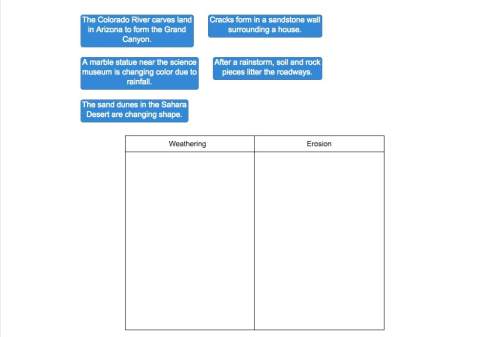
Biology, 05.02.2020 03:53 ninaaforever
Resistance against infection developed through a series of vaccine doses represents a case of:
a. artificially acquired passive immunity
b. naturally acquired passive immunity
c. artificially acquired active immunity
d. naturally acquired active immunity

Answers: 2
Another question on Biology

Biology, 22.06.2019 03:30
Rease is an enzyme used by plants to break down urea (a nitrogen-containing compound) into carbon dioxide and ammonia. urease urea > > > carbon dioxide and ammonia ammonia is broken down by plants into a nitrogen source plants need to grow. thus, plants could not use urea as a nitrogen source unless it was first converted to ammonia. in soybean plants there are two different kinds of urease, one produced in the seeds and the other produced in the leaves of the plant. three types of soybean plants were used in a set of experiments: normal soybeans and two mutant strains, one lacking the urease in the seeds only (strain 1) and one lacking urease in the leaves only (strain 2). experiment 1 separate areas in a field were planted with normal, strain 1, and strain 2 soybeans. all types of soybeans appeared to grow, flower, and produce seeds equally well. there were no externally detectable differences among the strains. experiment 2 small pieces of plant leaves of equal weight were obtained from each type of soybean plant and separately placed on media in culture dishes. tissue growing in this way will become an unorganized clump of cells referred to as callus. to provide a controlled nitrogen source, half the tissue samples of each type were placed on media containing urea, and the other half of the samples were placed on media containing ammonia. after 30 days, the weight gain for each of the callus samples was determined. results are shown in the table below.
Answers: 2

Biology, 22.06.2019 09:00
Hurry i need your (100 points) 1) what are the responsibilities of the region of the brain highlighted below? (picture located below) the highlighted portion is at the rear base of the brain, behind the brain stem. regulating homeostasis, hunger and eating, thirst and drinking, and many other functions of basic survival. coordinating movement and balance by using information from sensory nerves, including hand-eye coordination. controlling voluntary body movements, processing information from sense organs, thoughts, and learning abilities. regulating important involuntary bodily functions such as blood pressure, heart rate, breathing, and swallowing. 2)which of the following systems or structures is correctly paired with its function? neurons - brain cells that control thoughts, calculations, and memory cerebral cortex - portion of the brain that controls involuntary body movement peripheral nervous system - carries impulses to and from the central nervous system central nervous system - carries information from the nerves to the muscles and glands
Answers: 1

Biology, 22.06.2019 17:10
Organisms may contain up to five levels of organization within their bodies. which level of organization is shown by the liver? a. tissue b. organ c. organism d. organ system
Answers: 1

Biology, 22.06.2019 20:00
The evidence that egaeus has maimed berenice includes all of these except
Answers: 1
You know the right answer?
Resistance against infection developed through a series of vaccine doses represents a case of:
Questions




Geography, 31.07.2019 17:30

Biology, 31.07.2019 17:30


Mathematics, 31.07.2019 17:30

Mathematics, 31.07.2019 17:30







Mathematics, 31.07.2019 17:30

Biology, 31.07.2019 17:30

Mathematics, 31.07.2019 17:30






